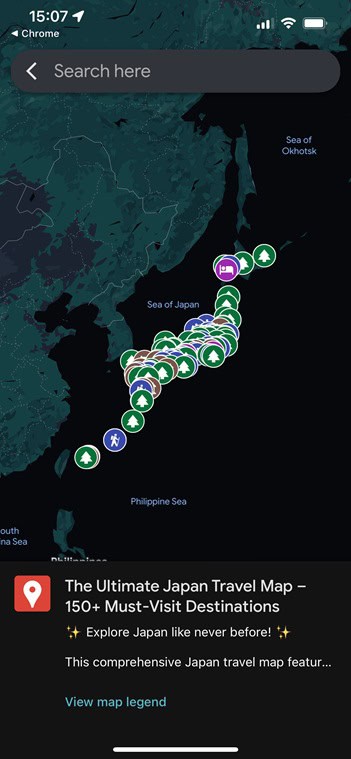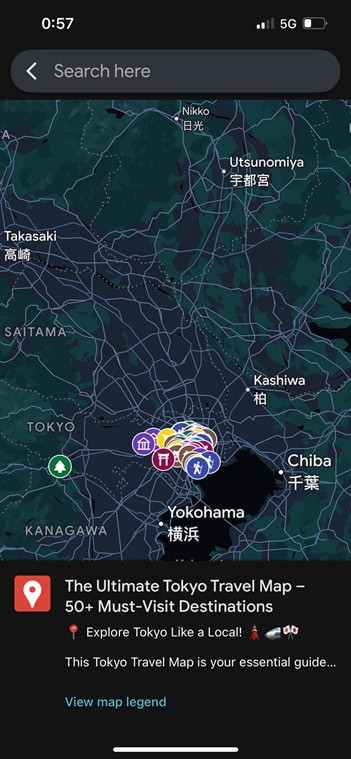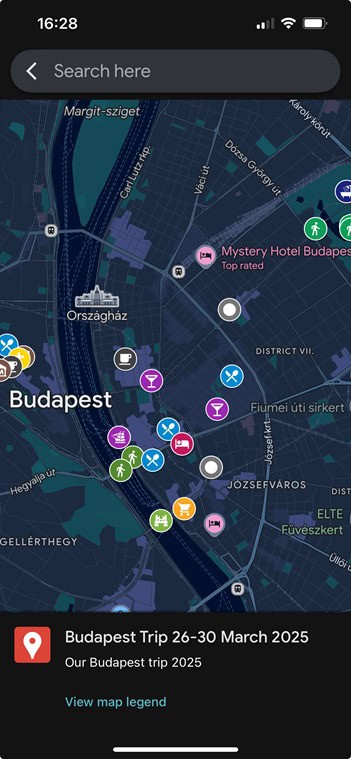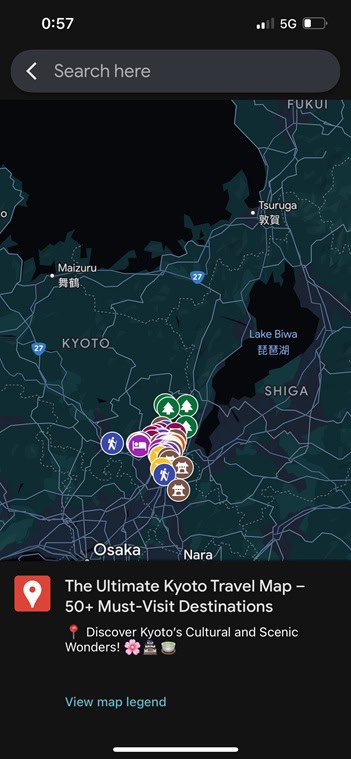Introduction: Japan’s Secret Tropics Await
When most travelers imagine Japan, they picture neon-lit cityscapes, misty mountains, and serene temples. But tucked far to the south and scattered across its vast Pacific expanse lies a very different Japan—one of turquoise waters, vibrant coral reefs, white-sand beaches, and laid-back island culture.
Welcome to Japan’s tropical side.
From the ever-popular Okinawa Main Island to untouched eco-paradises like Iriomote and the remote Ogasawara Islands, Japan offers some of the most diverse and awe-inspiring island escapes in Asia. These destinations aren’t just for beach lovers—they’re ideal for cultural explorers, families with adventurous kids, and couples seeking somewhere off the beaten path.
In this guide, we’ll take you through the best islands in Japan for every kind of traveler, while offering practical travel tips, cultural insights, and inspiration to help you plan your dream island-hopping adventure.
TL;DR (Too Long; Didn’t Read)
Japan’s southern islands offer a tropical escape with crystal-clear waters, rich Ryukyuan heritage, and activities for every type of traveler. From the popular Okinawa Main Island to remote gems like Iriomote and Ogasawara, this guide highlights the best islands for families, couples, and cultural adventurers. You’ll find top attractions, beaches, seasonal tips, and where to go for off-the-grid magic. Perfect for anyone seeking Japan beyond temples and Tokyo.
Get Your FREE London Travel Map + 5 Must-Have Travel Resources!
Plan smarter, stress less, and make every trip unforgettable with these exclusive tools—100% FREE!
📩 Sign up now & download instantly!

Why Japan’s Islands Deserve a Spot on Your Bucket List
A Different Side of Japan
The islands of southern Japan offer an entirely different climate, culture, and pace of life from the mainland. Here, you’ll find a fusion of Japanese and Ryukyuan traditions, subtropical vegetation, and hospitality that feels more Pacific island than Tokyo skyscraper.
With their own language influences, culinary specialties, and spiritual practices, these islands tell a lesser-known story of Japan—one deeply tied to nature, resilience, and community.
Who It’s Perfect For
- Families: With safe, shallow beaches, interactive marine centers, and calm lagoons perfect for snorkeling.
- Cultural explorers: For those seeking traditions and heritage distinct from mainland Japan.
- Adventure travelers: From jungle hikes and waterfall treks to scuba diving and kayaking in mangroves.
- Couples: Think romantic sunsets, beach picnics, and peaceful, low-tourism islands ideal for honeymoons or digital detoxes.
The Okinawa Main Island – Gateway to Paradise
Overview
Okinawa Island is the largest and most developed of the Ryukyu Islands and often the first stop for travelers heading south. With a combination of urban hubs, luxurious beach resorts, WWII history, and endless coastline, it’s a perfect entry point for first-time island adventurers.
Top Attractions
- Shurijo Castle: A UNESCO site and the historic heart of the Ryukyu Kingdom. Although heavily damaged by fire in 2019, restoration is ongoing, and visitors can still explore its resilient story.
- Churaumi Aquarium: Home to whale sharks, manta rays, and hundreds of reef species. A favorite among families.
- Cape Manzamo: Offers dramatic cliffside ocean views, perfect for sunset photography or a quiet romantic walk.
Best Beaches
- Emerald Beach (Motobu): Gentle waves and calm waters make this a family favorite.
- Nirai Beach (Yomitan): A scenic stretch of white sand with good snorkeling close to shore.
- Sunset Beach (Chatan): Right next to the American Village—great for nightlife, cafes, and beach lounging.
🛏️ Where to Stay on Okinawa Main Island
📍 Halekulani Okinawa – Onna
✨ A luxury beachfront resort with family suites, multiple pools, and a kids’ program — ideal for cultural explorers and families alike. Set along the scenic coast, just 15 minutes from Cape Manzamo.
Check availability →
📍 Hotel Orion Motobu Resort & Spa – Motobu
✨ Located just steps from Emerald Beach and Churaumi Aquarium, this is a top pick for families. Spacious ocean-view rooms and an on-site spa make it great for relaxing between adventures.
Check availability →
💡 Tip: Okinawa is a popular getaway year-round, especially during cherry blossom and summer beach seasons — book early to secure your top pick!
Ishigaki Island – Culture Meets Coral Reefs
Why Visit Ishigaki?
Located in the Yaeyama island chain, Ishigaki is a stunning balance of vibrant local culture and breathtaking natural beauty. It’s the go-to destination for those looking to snorkel, dive, and experience slower island life with an Okinawan twist.
Highlights
- Kabira Bay: Often hailed as one of Japan’s most scenic coastal spots. While swimming is prohibited due to strong currents, glass-bottom boat tours let you view the coral gardens below.
- Ishigaki Limestone Cave: Walkable for all ages with illuminated paths that showcase unique rock formations.
- Banna Park: A massive green space with panoramic views of the island and several kid-friendly activity zones.
Travel Tips
- Renting a car or scooter is highly recommended for flexibility and access to off-the-beaten-path beaches.
- Foodie musts: Try Ishigaki gyu (local wagyu beef) and Yaeyama soba, a comfort dish unique to this region.
🛏️ Where to Stay on Ishigaki Island
📍 Grandvrio Resort Ishigakijima – Arakawa
✨ Ideal for families and relaxation seekers, this beachfront resort has spacious rooms, a kids’ pool, and is a short drive from Kabira Bay and Banna Park.
Check availability →
📍 Fusaki Beach Resort Hotel & Villas – Ishigaki
✨ A favorite for both families and couples, this resort offers direct beach access, villas with private terraces, and activities like snorkeling and cultural performances.
Check availability →
💡 Tip: Ishigaki is one of Japan’s most sought-after island escapes. Accommodations fill fast during diving season and holidays — book early, especially if traveling with kids or a group.
Need More Help Planning Your Trip?
Taketomi Island – Preserved Ryukyuan Heritage
Step Back in Time
Taketomi Island is a living museum of Ryukyuan tradition, just a short 10-minute ferry ride from Ishigaki. This tiny island is known for its preserved village, coral-sand paths, and serene, slow pace.
What to Do
- Kondoi Beach: Shallow, crystal-clear waters make it ideal for families and casual wading.
- Village walk: Explore red-tile-roofed homes surrounded by hibiscus flowers and stone walls, where cars are nearly nonexistent.
- Water buffalo rides: A touristy but charming experience where local guides sing folk songs as they steer you through the village.
Ideal For
Families with kids, slow travelers, and anyone looking to unplug and reconnect with nature and culture.
🛏️ Where to Stay on Taketomi Island
📍 Hoshinoya Taketomi Island – Taketomi
✨ An upscale ryokan-style resort inspired by traditional Okinawan architecture. Offers private villas, tranquil gardens, and cultural immersion experiences — ideal for couples and slow-traveling families.
Check availability →
💡 Tip: Taketomi has limited lodging and fills up quickly, especially during holidays and festival seasons — secure your spot early if you plan to stay overnight.
Iriomote Island – Japan’s Wild Side
Adventure Central
Iriomote is the second-largest island in Okinawa Prefecture, yet it’s largely undeveloped and covered in jungle. If you’re craving nature and a little bit of challenge, this is where you go.
Activities
- Kayaking through mangroves: Paddle your way through thick, untouched wilderness.
- Pinaisara Falls hike: A combo of river trekking and forest hiking to reach Okinawa’s tallest waterfall.
- Wildlife spotting: Home to rare species like the Iriomote wildcat (nocturnal and elusive), this island is a biodiversity hotspot.
Best For
- Active travelers seeking off-the-grid adventures.
- Couples or solo travelers wanting to avoid crowds.
- Nature lovers and conservationists interested in local ecology.
🛏️ Where to Stay on Iriomote Island
📍 Iriomote Jungle Hotel Painumaya – Uehara
✨ Nestled between jungle and sea, this eco-lodge offers guided nature tours and easy access to kayaking routes — ideal for adventure seekers and nature lovers.
Check availability →
💡 Tip: Iriomote has limited infrastructure, so booking your stay early ensures better access to tours, meals, and ferry transfers — especially during peak eco-tourism seasons.
🎟️ Want to explore Japan’s island adventures stress-free?
Many experiences mentioned in this guide—like mangrove kayaking in Iriomote, glass-bottom boat rides in Kabira Bay, or eco tours in the Ogasawaras—can be booked in advance through trusted platforms like Klook.
Booking ahead not only saves time but helps ensure availability during peak seasons. If you can’t find a specific activity on Klook, be sure to check the attraction’s official website for the most up-to-date info and ticketing options.
Discover Our Ultimate Collection of Travel Maps
Zamami & Kerama Islands – Day Trips or Peaceful Escapes
Highlights
Just 1–2 hours by ferry from Naha, these islands are ideal for a tropical day trip or peaceful overnight escape. Known for their remarkable water clarity and easy access from the Okinawa mainland.
Recommended Spots
- Furuzamami Beach (Zamami): Frequently listed as one of Japan’s best beaches. Snorkeling right off the shore reveals colorful coral and fish.
- Aka Island: Quieter than Zamami, with hiking trails, picturesque viewpoints, and the chance to spot sea turtles near the beach.
Who Will Love It
- Snorkelers, freedivers, and beach lovers.
- Families wanting safe and clear waters for swimming.
- Couples seeking peace and privacy away from urban buzz.
🛏️ Where to Stay on Zamami & Kerama Islands
📍 Cha-Villa – Zamami
✨ A cozy and modern guesthouse just minutes from Furuzamami Beach. Offers family rooms and easy access to local restaurants and snorkeling spots — great for both families and couples.
Check availability →
📍 Kerama Terrace – Tokashiki Island
✨ Stylish and peaceful, this boutique hotel is ideal for couples or solo travelers. Known for attentive service, on-site dining, and quick access to Aharen Beach and ferry connections.
Check availability →
💡 Tip: Many stays in the Kerama Islands are small-scale and locally run — rooms fill quickly during holiday weekends and summer. Book early if you plan to stay overnight rather than day-trip.
Ogasawara Islands (Bonin Islands) – Remote and Untouched
Truly Off the Beaten Path
Often called “The Galápagos of the East,” the Ogasawara Islands are a UNESCO Natural World Heritage site located about 1,000 km south of Tokyo. What makes these islands so special is not just their remoteness, but their biodiversity—over 400 species are endemic.
What to Do
- Whale watching: Humpback whales (Jan–Apr) and sperm whales (summer) frequent these waters.
- Eco tours: Take a guided hike or boat trip to explore pristine ecosystems and uninhabited islands.
- Snorkeling and diving: Expect manta rays, dolphins, and healthy coral reefs.
- Stargazing: With no light pollution, the night sky here is spectacular.
Important Considerations
- Access: A 24-hour ferry ride from Tokyo is the only way to reach the islands—no airports.
- Ideal For: Slow travelers, nature photographers, and digital detoxers.
- Tip: Bring seasickness bands or meds; ocean swells can be rough.
🛏️ Where to Stay on the Ogasawara Islands
📍 Heart Rock Village – Chichijima
✨ Surrounded by nature and just a short walk to the beach, this friendly stay offers traditional design, local vibes, and a peaceful retreat — perfect for slow travelers and eco-tour lovers.
Check availability →
📍 Shanti Bungalow – Chichijima
✨ A cozy hideaway with wooden interiors, quiet surroundings, and beautiful starry night views. Ideal for couples, nature photographers, and travelers seeking digital detox.
Check availability →
💡 Tip: Lodging on the Ogasawaras is extremely limited and often books out months in advance — confirm your stay before reserving your ferry tickets.

Test Your Travel Smarts with Our Quizzes!
Think you know your way around the world? From cultural traditions to hidden gems, our short and playful travel quizzes are the perfect way to challenge yourself, learn something new, and maybe even spark your next adventure. Great for anyone who loves a bit of travel trivia fun!
Planning Your Island Adventure
When to Go
- April to October is prime season for water activities and sunny skies.
- July to September is warmest but overlaps with typhoon season—keep an eye on forecasts.
- Winter is cooler and quieter, good for hiking and whale watching, but some marine activities are limited.
What to Pack
- Lightweight, breathable clothing
- Waterproof sandals or aqua shoes
- UV-protective swimwear or rash guards
- Snorkel mask or goggles (rentals may be limited on smaller islands)
- Reef-safe sunscreen (some areas require it to protect marine life)
- Dry bags, reusable water bottles, portable fans
Budget & Connectivity Tips
- Cash is essential on smaller islands; ATMs are limited.
- Download offline maps before leaving big cities.
- For international travelers, use the Wise app for better currency conversion and budgeting control while booking ferries, tours, or local meals.
🗺️ Ready to Map Out Your Island Adventure?
Whether you’re dreaming of snorkeling in Ishigaki, jungle trekking in Iriomote, or soaking up sunsets on Zamami — our AI-powered itinerary builder helps you plan your perfect tropical escape, day by day.
🌴 Hassle-free planning starts here — get your free custom island itinerary in minutes:
Memorable Mentions – Hidden Island Gems
For seasoned travelers or anyone building a multi-island itinerary, here are a few more paradises worth exploring:
Miyako-jima (Okinawa Prefecture)
- Yonaha Maehama Beach: Often ranked among the top beaches in Asia for its endless white sand and calm waters.
- Irabu Bridge: Japan’s longest toll-free bridge offers scenic drives between islands.
Kume Island
- Hatenohama Beach: A sandbar in the middle of the ocean accessible only by boat. Unforgettable day trip.
- Great for those wanting beauty without big crowds.
Hateruma Island
- Japan’s southernmost inhabited island, known for some of the clearest skies in the country—perfect for stargazing and peaceful beach time.
Conclusion: Discover the Tropics, Japan-Style
Japan’s islands are a revelation. They invite you to slow down, breathe in salty air, and explore a side of the country most travelers never see. From family-friendly beaches and cultural immersion in Taketomi, to wild eco-adventures on Iriomote or once-in-a-lifetime stargazing on Hateruma, Japan’s southern islands offer something extraordinary for every type of traveler.
So whether you’re planning your first trip to Japan or your fifth, consider skipping the crowds of Kyoto or the chaos of Shibuya—just this once—and let the rhythm of the islands guide your journey.
Have you explored any of Japan’s islands? Tell us in the comments which one stole your heart—or which you’re dreaming of visiting next.
Plan Your Ultimate Japan Trip
Frequently Asked Questions About Visiting Japan’s Tropical Islands
Q: What’s the best time of year to visit Japan’s southern islands?
A: April to October is generally ideal for water activities and beach weather, with July to September offering the warmest seas. However, this also overlaps with typhoon season, so keeping an eye on weather forecasts is important. Winter is quieter and good for hiking and whale watching.
Q: Are Japan’s tropical islands suitable for family travel?
A: Absolutely. Islands like Okinawa, Ishigaki, and Taketomi offer safe beaches, interactive aquariums, and gentle activities like glass-bottom boat rides. Many accommodations also cater to families, making these destinations a great fit for travelers with children.
Q: How do I get around on islands like Ishigaki or Iriomote?
A: Renting a car or scooter is highly recommended, especially for remote or less developed islands. Public transportation can be limited, and having your own wheels makes it easier to explore hidden beaches or local food spots.
Q: What’s the best island in Japan for snorkeling or diving?
A: Ishigaki and the Kerama Islands (like Zamami and Aka) are top choices, thanks to clear waters, healthy coral reefs, and easy beach access to snorkeling spots. Many day tours and gear rentals can be booked through platforms like Klook for convenience.
Q: Can I book accommodations on these islands through Booking.com or similar platforms?
A: Yes, most popular islands—including Okinawa, Ishigaki, and Zamami—have a wide range of listings on Booking.com and Trip.com, from family-friendly resorts to budget stays. It’s a smart way to compare prices and amenities in advance, especially during peak travel seasons.
Q: Is cash still necessary on these islands?
A: Yes. While major towns and resorts may accept cards, many local shops, ferries, and restaurants only take cash. Be sure to carry yen and download offline maps ahead of time. Using an app like Wise can help you convert and transfer money with low fees before you go.
Q: Are the Ogasawara Islands worth visiting despite the long ferry ride?
A: They are, but only if you’re prepared for the journey. A 24-hour ferry from Tokyo is the only way to get there, but the reward is pristine nature, unique wildlife, and almost no crowds. It’s best suited for slow travelers and nature lovers.
Q: Which island is best for a peaceful, cultural experience?
A: Taketomi Island is perfect for that. With traditional Ryukyuan houses, coral paths, and minimal vehicles, it feels like stepping into a living museum. It’s a great day trip from Ishigaki or an overnight stay for total cultural immersion.
📌 Love cultural travel? Explore more ideas on Pinterest →













